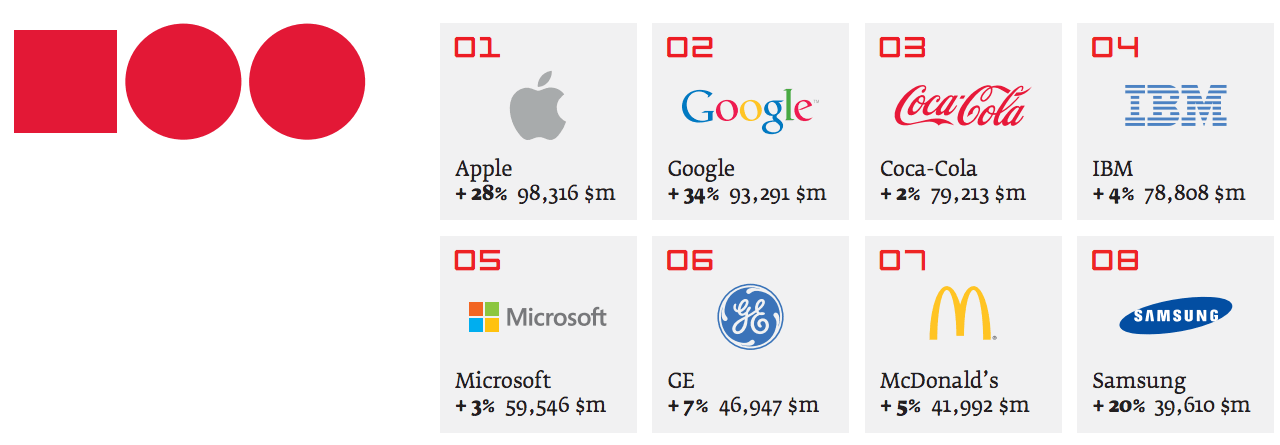3 minute read / Oct 1, 2014 /
The Valuable Startup Equity That's Not Captured in Your Cap Table
I met a founder a few days ago who captured the idea of building brand equity really well. He said something along the lines of, “Every time we provide a magical experience to a customer, we invest in our brand equity. Each time we do something that disappoints them or overtly extracts value from our users, we expend brand equity.” This founder prided himself on continuously investing in and increasing his business’s brand equity over long periods of time.
Brand equity is important because it can become a significant part of a company’s value. I copied the image above from an annual Interbrand report on the most valuable brands in the world. In many cases, the brand equity of these businesses are a material fraction of their market caps. The brand recognition and goodwill customers feel towards these brands is an enormously powerful marketing force and hugely-defensible competitive advantage. In fact, Peter Thiel wrote about brand as a core asset of the best startups in his recent book, Zero to One.
But brand equity isn’t a topic of many conversations in Startupland because unlike revenue, gross margin, cost of customer acquisition or lead velocity, for startups, immediate changes in brand equity are nearly impossible to quantify. In addition, private companies may have more difficulty convincing investors of the intangible value of a brand.
While there are a few popular metrics used to proxy the value of a company’s brand equity, like Net Promoter Score, which may be the most popular one, or referrals as a fraction of total new customer leads, these metrics are like the three blind men feeling different parts of the elephant. They capture part of the concept, but not the essence of it.
But as this founder pointed out to me, perhaps the accurate measurement of brand equity isn’t the best way to think about it. There’s a mantra many of us subscribe to: “If you can’t measure something, you can’t understand it. If you can’t understand it, you can’t control it. If you can’t control it, you can’t improve it.” This maxim’s roots lie in Total Quality Management, a branch of operations research to maximize factory output. Needless to say, TQM cares little for brand or external perception.
In addition to forming a material part of a company’s value and becoming a powerful marketing advantage, a company that champions brand equity internally will make product decisions in the best interest of their customers. Said more succinctly, focus on the user and all else will follow. This long term view shapes the culture of a startup’s workplace and reinforce values that will attract talented people whose mission aligns with the business.
When confronted with an important product or marketing or sales decision, if each member of a startup asks, how can we build our brand equity with this?, then a startup’s management team can rest easy knowing the company is building a long-term competitive advantage, a culture to recruit great talent, a loyal customer base and an asset of compounding value to the business. Even if they can’t measure it.
